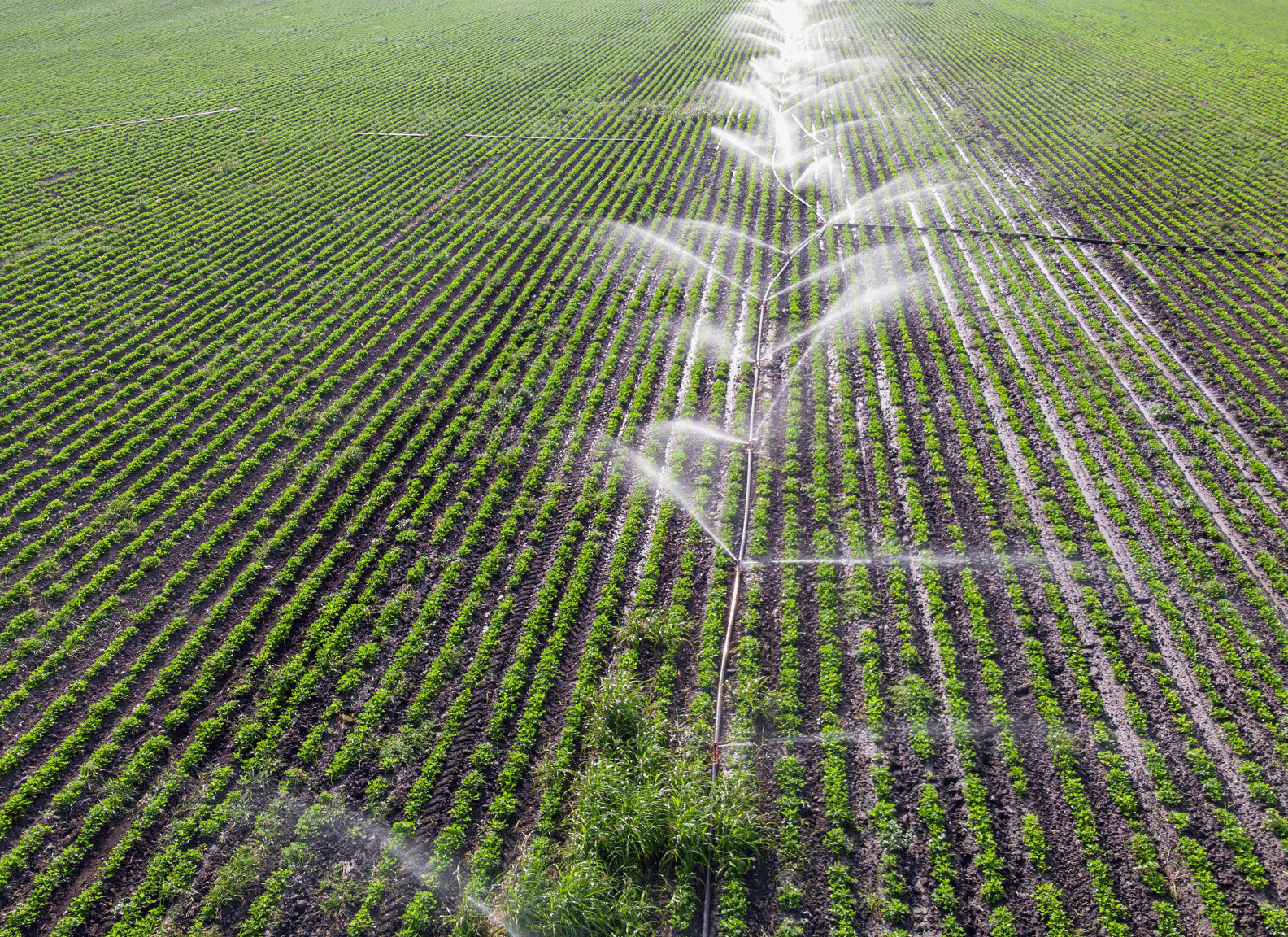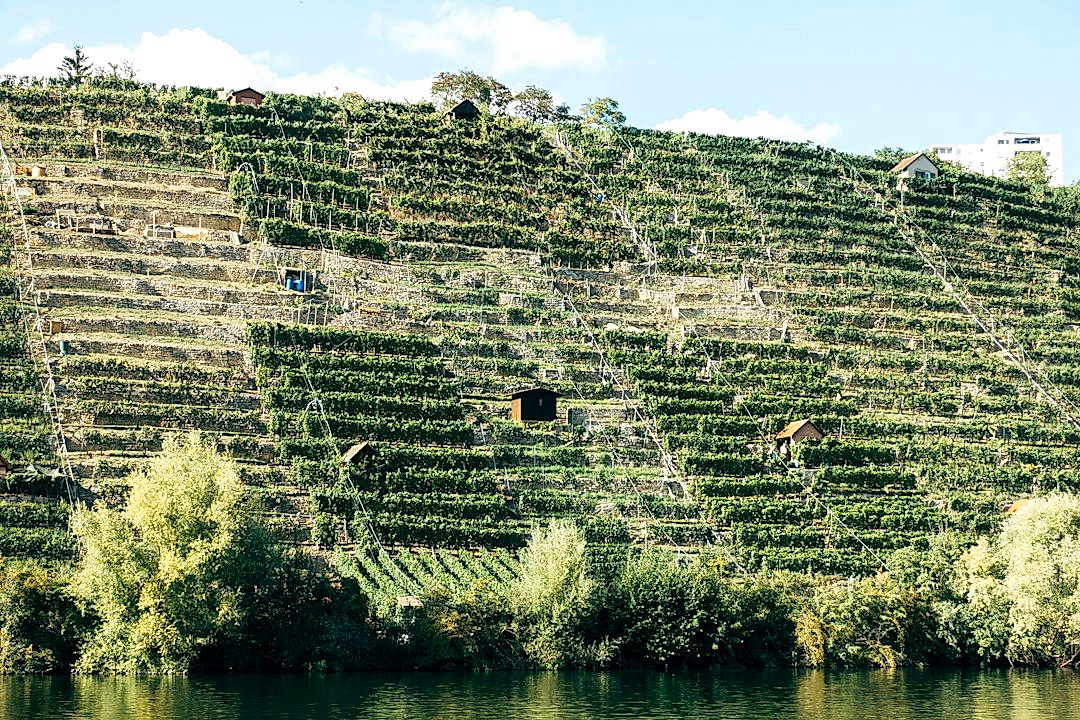The growing scarcity of freshwater resources due to climate change has precipitated the need for innovative ways to conserve water in agriculture.
Achieving water efficiency in produce farming isn’t merely beneficial, but is becoming critically necessary.
Technological advancements are playing a significant role in this critical endeavor, offering a myriad of solutions to help mitigate the impact on our most precious resource.
From smart irrigation systems to soil moisture sensors, agricultural technology is evolving at a rapid pace.
This article aims to highlight various water-saving technologies that have the power to transform agricultural practices.
Stay tuned to delve deeper into the fascinating intersection of technology and sustainable farming practices.
Water-saving Techs For Produce Farming
1. Soil Moisture Sensors
The evolution of farming has experienced significant technological advancements in recent times, with one of the noteworthy innovations being soil moisture sensors.
These small, yet incredibly instrumental devices, termed soil moisture sensors, are reshaping the landscape of modern agricultural practices by optimizing the use of water and essentially creating a more sustainable farming setup.
At the basics of their functionality, soil moisture sensors work by measuring the volumetric water content in the soil.
This smart technology marks a move towards more efficient farming by detecting the level of water content in the soil, eliminating the guesswork in farming regarding when and how much to irrigate.
With the information provided by soil moisture sensors, farmers can apply precise amounts of water at the perfect timings, steering clear of both overwatering and underwatering the crops thus contributing to water conservation.
This not only conserves water but also significantly improves the crop yields, reducing the risk of crop diseases linked to over watering or drought stress.
Today’s soil moisture sensors are equipped with wireless communication ability, making data retrieval much easier and feasible.
The monitored data can easily be accessed by farmers from a remote location, using various platforms including but not limited to smartphones, laptops or tablets.
This ease of accessibility of real-time information is invaluable for farmers as it reduces the necessity of time-consuming field visits.
Most of these sensors are durable and can withstand various climates and soil conditions, guaranteeing longevity and sustained accuracy of readings.
Furthermore, integrating soil moisture sensors with an automated irrigation system creates a high-tech solution for water management in farming.
This combination can trigger irrigation when soil moisture falls below a pre-set threshold and turn it off when the desired level of moisture content is reached.
As such, soil moisture sensors can play a big role in precision irrigation, contributing to significant water savings.
They are also relatively cost-effective tools which provide numerous benefits to the farmer from sustainable water management to economic savings.
Their widespread adoption in farming operations globally represents an effective approach to water-saving technology in agriculture.
In the greater picture, the use of soil moisture sensors demonstrates how advancements in technology can play a pivotal role in sustaining our planet’s precious water resources.
To summarize, the soil moisture sensor is playing an essential role in not saving water, but also increasing the farm’s efficiency and productivity.
2. Drip Irrigation Systems
The innovation of drip irrigation systems presents an effective solution for water conservation in produce farming.
Rather than traditional sprinkler systems that distribute water over a wide area, drip irrigation works by delivering water slowly and directly to the plant’s root zone.
This approach significantly reduces water wastage due to evaporation, runoff, or non-targeted watering.
Specifically designed emitters, which are part of the drip irrigation system, control the water discharge rate depending on the requirement of different crops.
Through such precision, drip irrigation systems facilitate optimal use of water, ensuring that each plant receives the necessary amount of water, no more and no less.
The systems also allow farmers to integrate fertilizers and other nutrients directly into the irrigation water, a practice known as fertigation.
Through fertigation, not only is water saved, but also fertilizers, as they are directly delivered to the root zone, enhancing their absorption and eliminating wastage.
It’s worth noting that drip irrigation systems are especially beneficial in arid and semi-arid regions where water scarcity is a major challenge.
Studies reveal that implementing drip irrigation can result in up to 60% water savings compared to traditional irrigation methods.
The installation and maintenance of drip irrigation systems do require an initial investment, but the long-term water and cost savings make them a worthwhile venture for produce farmers.
Emerging technologies are simplifying the use of drip irrigation systems, with automated systems that can be monitored and controlled remotely for even greater water conservation.
Implementation of drip irrigation also leads to higher yields as sufficient water availability can significantly boost crop growth.
Additionally, because the water application is well-controlled, there’s a lesser chance of crop diseases associated with waterlogging or over-irrigation.
Drip irrigation thereby proves to be an advantageous water-saving technology in produce farming, combining efficiency, economy, and environmental sustainability.
As global water resources continue to diminish, the application of water-saving technologies such as drip irrigation systems in produce farming is not just beneficial, but essential.
3. Climate-Controlled Greenhouses
The concept of climate-controlled greenhouses is an advanced technology being utilized extensively in modern agriculture.
Water-saving is one of the significant advantages of these greenhouses.
Climate-controlled greenhouses allow the farmer to control both temperature and humidity levels, thereby aiding in water conservation.
The technology also helps in reducing water wastage that is often common in traditional farming practices.
One of the ways the technology does this is by recycling the condensation inside the greenhouse, which can then be redirected towards watering the plants.
Using this method, plants always receive an adequate amount of water without any wastage, leading to water conservation.
The automation of these greenhouses also contributes significantly to saving water.
Since these greenhouses can monitor and adjust climate conditions based on the needs of the specific crop being grown.
This transforms into needing less water to maintain favorable growing conditions for the crops.
Another water saving benefit is the isolation of plants within the greenhouses.
Greenhouse crops typically require less irrigation than outdoor crops as they are shielded from excess evaporation caused by wind and sun.
Furthermore, with climate-controlled greenhouses, there is the added advantage of enabling year-round growing conditions for the crops.
Farming cycles can be optimized for maximized produce and minimized water usage.
.Heating and cooling systems in the greenhouses are also used to provide the optimum temperature for plant growth, thereby reducing reliance on water as a temperature moderator.
All these advantages make climate-controlled greenhouses an essential water-saving technology for produce farming.
Such advancements will play a crucial role in successful and sustainable agriculture, especially considering the global demand for more food production and less water wastage.
4. Automated Water System
The automation of water systems is a significant leap towards the sustainable use of water in agriculture.
Automated water systems use technology to manage the application of water to crops, optimizing the process and reducing wastage.
They provide numerous benefits, including reducing water consumption, enhancing crop yields, and increasing operational efficiency on farms.
While traditional water systems require manual effort to monitor and manage the water supply, automated systems make use of sensors and advanced devices that work round the clock.
These systems can determine the exact amount of water needed by each plant, avoiding the application of excessive water and subsequently reducing wastage.
With an automated water system, farmers can manage their irrigation schedules better, providing their crops with water only when necessary.
The accuracy and real-time monitoring provided by automated water systems can significantly reduce water waste and ensure each plant receives the right amount of water for optimum growth.
A key feature of automated water systems is their ability to monitor and adjust the water supply based on the data collected from the field.
For instance, they can reduce water supply during times of rainfall, preventing excess water from drenching the crops.
Furthermore, they can adjust the irrigation schedule based on the type of crops and their specific water requirements.
These systems are crucial in areas prone to drought, where water conservation is of utmost importance.
By using an automated water system, farmers can ensure steady crop production even during drought conditions.
Many automated water systems also come with advanced features like remote control operation, allowing farmers to control the system from a distance.
Implementation of automated water systems in agriculture is a clear indication of how technology can be leveraged to manage our water resources sustainably.
Initial installation and setup costs can be high, but the savings in water and improved crop yields can make it a valuable investment in the long run.
So, it’s safe to say that embracing automated water systems in farming is one of the most effective ways to conserve water and increase productivity in the sector.
With the global water crisis looming, it is vital for farmers to make the shift from traditional water systems to automated ones, ensuring a sustainable future for farming.
5. Precision Agriculture Technologies
Precision agriculture technologies are a revolutionary move towards optimizing the use of water in produce farming.
These techniques leverage state-of-the-art technology including machine learning, satellite imagery, big data, and advanced analytics to enhance water-use efficiency and yield productivity.
The primary aim of precision agriculture technologies is to accurately assess the needs of individual plant or at least sections within the farm, and provide just the necessary amount of water.
This eliminates unnecessary waste of water and ensures that each plant gets optimum hydration for growth.
To achieve this, a combination of soil sensors, aerial images, weather data, and other related analytics are used to create a holistic understanding of the farm’s water needs.
Such technologies enable farmers to have a bird’s eye view of their farm regardless of its size, identifying where water would be required the most.
The application of data analytics comes into play here, interpreting the collected information and providing actionable insights to the farmer.
This way, the irrigation system can be controlled to deliver water to specific areas of the farm which need it most, reducing water waste considerably.
The Internet of Things (IoT) plays a significant role in precision agriculture, with connected sensor devices providing important information in real-time.
For example, a soil moisture sensor could relay information about the soil’s moisture levels to the irrigation system, which then adjusts its water output accordingly.
Through this process, precision agriculture technologies can save up to 40% of water that would have otherwise been wasted in a traditional irrigation system.
Furthermore, advancements in cloud computing and machine learning capabilities have propelled the use of predictive analytics in farming.
Farmers can now accurately predict their water needs based on past weather patterns, forecast data, and crop growth trends.
This eliminates guesswork and reduces the risk of overwatering or underwatering, which have detrimental effects on crop yield.
Precision agriculture technologies not only promote efficient farm management but also contribute to sustainable farming by conserving water resources.
As water scarcity remains a global concern, adopting these technologies in produce farming is vital for sustainability.
6. Water Recycling Systems
As part of the Water-Saving Techs for Produce Farming, water recycling systems are an integral technology that can help reduce the amount of water used in agriculture.
These systems work by collecting, treating, and reusing wastewater, run-off, or even collected rainwater from farming operations.
Water recycling systems can drastically reduce the amount of fresh water needed for irrigation, helping to conserve precious water resources especially in areas with water scarcity.
The use of water recycling systems is not only beneficial for saving water, but it also can result in savings on water bills for farmers.
In addition to the cost savings, water recycling systems are ecologically responsible, supporting the sustainable use of water resources, and helping to lessen agriculture’s environmental impact.
There are different approaches to recycling water, varying based on the size and needs of the particular farming operation.
For example, a small market garden might only require a simple rain barrel and filtration system, while a larger farm might need more sophisticated systems like constructed wetlands or advanced wastewater treatment plants.
Regardless of the scale, the basic principles of water recycling systems in agriculture remain the same: to reuse as much water as possible.
Before implementing a water recycling system on a farm, it’s essential to conduct a thorough assessment of the farm’s water needs and available resources.
This can help in designing a system that will be most effective in reducing water use and can also save money in the long run.
An important part of the assessment is identifying potential sources of inevitable waste that can be recycled, such as run-off water from fields and greenhouses, or wastewater from washing crops.
Once these sources are identified, the next step is to decide on the best methods for collecting and treating the water so it can be safely reused.
Water treatment methods can range from simple filtration systems that remove solid particles, to more advanced methods like reverse osmosis, which can remove bacteria, viruses, and other contaminants.
It’s important to note, however, that while water recycling systems can significantly reduce water use in agriculture, they aren’t a silver bullet solution for all water scarcity issues.
Nonetheless, they represent a critical part of a more sustainable and water-smart approach to farming that can help address the pressing problem of water scarcity, particularly in areas that are prone to drought or where water resources are heavily utilized.
7. Rainwater Harvesting Mechanisms
Rainwater harvesting mechanisms are an integral component of many water-saving technologies in the field of produce farming.
It’s an age-old practice that, with the help of modern technology, has now become a more feasible and effective method for saving water.
These systems channel the free supply of rainwater into useful applications instead of letting it go down the drain, thereby enhancing agricultural productivity while conserving water.
Not only are rainwater harvesting mechanisms cost-effective, they also contribute to sustainable farming by reducing reliance on conventional water sources.
The basic principle behind a rainwater harvesting system is to collect and store rainwater during periods of precipitation, which can then be used during times of water scarcity.
This principle is put into practice using a number of different methods and technologies, each of which might be better suited to particular types of farming operations.
For larger scale farms, rainwater harvesting systems often include large storage tanks or reservoirs, pipework and a filtration system to ensure the stored water is safe for use.
For smaller scale or urban farms, simpler systems can be used, often involving water barrels and roof catchment techniques.
Regardless of the size or type of the farming operation, the principal aim of these systems is to maximise the capture and utilisation of naturally occurring rainwater.
Advanced rainwater harvesting systems may also incorporate smart technology to improve their efficiency.
This can include electronic devices that monitor rainfall patterns and, in combination with predictive weather data, optimise the collection and use of rainwater.
Such smart systems can even automate the distribution of harvested water to the areas where it is most needed, using algorithms and sensors to determine optimal irrigation levels.
While the initial investment for such sophisticated systems may be high, the savings made in the long term through reduced reliance on conventional water sources can make it a worthwhile investment.
Furthermore, in regions where water shortages are frequent, rainwater harvesting can be a vital tool, enabling farmers to continue cultivating crops in difficult conditions.
Importantly, the widespread adoption of rainwater harvesting mechanisms can play a significant role in mitigating the impacts of climate change on agriculture by making farming operations more resilient to erratic rainfall patterns.
In conclusion, rainwater harvesting mechanisms are scalable and versatile, capable of being adapted to suit varied agricultural requirements and climatic conditions.
8. Crop Monitoring Drones
In an attempt to conserve water in produce farming, the usage of Crop Monitoring Drones has become increasingly prevalent in recent times.
Equipped with high-definition cameras and cutting-edge sensors, these drones can provide important data about the farm’s condition.
This data can encompass a variety of information, including the level of soil moisture and areas that may be lacking in water.
By effectively scanning the entire farmland, drones can ensure that every inch of the land gets an appropriate amount of water.
This efficient use of water helps to prevent overwatering, thereby conserving significant amounts of the crucial resource.
Another advantage of using drones is their real-time monitoring capability.
Instead of waiting for visible symptoms in the crops which could potentially cause irreversible damage, drones could help detect early signs of water stress in plants.
This would enable farmers to take immediate action and prevent any potential water-related diseases.
Thus, preventive measures can be taken before any significant damage is observed, hence aiding in the conservation of water.
Moreover, the data collected by drones can help in the meticulous planning of irrigation
By analyzing the data provided by these drones, farmers can optimally plan their irrigation schedule and water quantity, thus ensuring every plant get its needed water and preventing water wastage.
Sometimes, uneven distribution of water can occur and certain areas on the farmland receive more water than others.
However, with drones that can observe the entire landscape and notice such inconsistencies, farmers can adjust their irrigation techniques to ensure even distribution of water.
In addition, drones can be operated remotely thus saving the farmer’s time invested in manual and labor-intensive field data collection.
Factoring in all these advantages, it is evident that crop monitoring drones are indeed a revolutionary water-saving tech in produce farming.
Through their various functions and capabilities, they not only help conserve water, but also contribute significantly to the overall efficiency and productivity of the farming process.
9. Evapotranspiration-based Irrigation
The agriculture sector has always been at the forefront of technological innovation, and evapotranspiration-based irrigation is currently one of the most promising water-saving technologies being explored.
This technique attempts to maximize irrigation efficiency by utilizing the natural processes of evaporation and plant transpiration.
Evapotranspiration (ET) is the combined process of water evaporation from the Earth’s surface and transpiration from plant leaves.
This natural process has significant implications for irrigation practices as it determines the amount of water that crops need to grow and flourish.
Therefore, an evapotranspiration-based irrigation system involves constantly monitoring the ET rates of crops and adjusting irrigation procedures accordingly.
By aligning irrigation with the evapotranspiration rates of crops, farmers can ensure that water is not wasted on over-irrigation while still maintaining optimal crop health and yield.
This process also means reducing instances of under-irrigation which can negatively impact crop yields.
Therefore, ET-based irrigation helps to maintain good crop quality while significantly reducing water usage – an incredibly important factor considering that agriculture uses about 70% of freshwater worldwide.
ET-based irrigation systems generally use sensors and automated technology to measure local evapotranspiration rates and weather conditions, translating this data into precise irrigation schedules.
This high-tech approach allows farmers to optimize water use and reduce wastage, contributing to more sustainable farming practices.
The system also helps prevent soil erosion and nutrient leaching, which can occur through excessive irrigation.
The potential for ET-based irrigation to improve water efficiency in agriculture is already being recognized.
Various studies and on-farm trials have demonstrated the positive impact of these systems on both water conservation and crop yields.
However, implementing such systems on a broader scale requires ongoing research and development, to ensure that they are both economically viable and practical for different farming contexts.
Despite these challenges, the potential benefits of ET-based irrigation ultimately cannot be ignored, as the ongoing threats of climate change and water scarcity make the need for water-efficient farming methods more imperative than ever before.
With adequate support and development, evapotranspiration-based irrigation could become a standard practice in sustainable farming, offering an effective solution to one of agriculture’s most pressing challenges.
10. Hydrogel-Based Farming
Hydrogel-based farming is a revolutionary technology in the realm of water-saving techniques for produce farming.
These hydrogels are superabsorbent polymers that can retain enormous volumes of water relative to their own mass.
They act like sponges, collecting water from rainfall or irrigation, and then gradually releasing it in the root zone of plants as needed.
Effectively, these hydrogels act as a mini-reservoir of water for plants, thereby significantly reducing the requirement for water irrigation.
Hydrogel-based farming is especially beneficial in regions prone to drought or where water supply is scarce or expensive.
It provides a sustainable solution to maintain adequate soil moisture levels, ensuring that plants receive the necessary hydration to grow and flourish.
Besides water conservation, hydrogels also improve soil structure by preventing soil compaction and erosion.
They enhance seed germination and encourage healthier root development by providing a moist environment around the plant root zone.
In addition, hydrogels reduce nutrient leaching from the soil, improving nutrient usage efficiency and promoting better crop yield.
The application of hydrogel-based farming is not limited to field crops; it can also be used in pot plants, lawns, orchards, and nurseries.
However, it’s important to recognize that while hydrogels offer many advantages, their application must be carefully managed.
For instance, excessive use of hydrogels can lead to waterlogging which can damage plant roots and hinder crop growth.
Therefore, farmers need to use them judiciously and preferably in conjunction with other water-saving technologies for more efficient water management.
Various companies are now producing biodegradable hydrogels which not only save water but are also environment-friendly.
Use of such hydrogels in farming could help farmers save water, improve crop yield and sustain soil health, while at the same time mitigate negative environmental impacts.
Given these benefits, hydrogel-based farming holds the potential to revolutionize water management in agriculture and represents a step forward in achieving sustainable farming practices.
The Bottom Line
Farming and agriculture have started witnessing a dramatic revolution with the introduction of these high-tech solutions.
Implementations such as soil moisture sensors, climate-controlled greenhouses, and precision agriculture technologies significantly improve water efficiency and boost overall productivity levels.
Autonomous water systems, water recycling systems, and evapotranspiration-based irrigation further reduce water waste and ensure maximum utilization.
Coupled with innovative techniques like hydrogel-based farming and beneficial devices like crop monitoring drones, these advancements are proving integral in cultivating a sustainable and resource-efficient future for agriculture.
Overall, these technologies are not just conserving a precious resource like water but are also paving the way towards a newer, greener era in agriculture.




